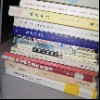
计算机图形学:算法与实现
¥ 124.29 九品
仅1件
北京东城
认证卖家担保交易快速发货售后保障
作者[印]穆克赫尔吉(Mukherjee D.P.) 著
出版社清华大学出版社
出版时间2012-01
版次1
装帧平装
货号A12
上书时间2024-11-04
- 最新上架
商品详情
- 品相描述:九品
图书标准信息
- 作者 [印]穆克赫尔吉(Mukherjee D.P.) 著
- 出版社 清华大学出版社
- 出版时间 2012-01
- 版次 1
- ISBN 9787302274872
- 定价 59.00元
- 装帧 平装
- 开本 16开
- 纸张 胶版纸
- 页数 583页
- 正文语种 简体中文
- 丛书 大学计算机教育国外著名教材系列
- 【内容简介】
- 《大学计算机教育国外著名教材系列(影印版)·计算机图形学:算法与实现》是在多年的教学经验基础上,从方便读者接受和理解的角度来编写的,每章先以浅显的语言介绍计算机图形学的算法,然后以丰富的示例阐述计算机图形学基本算法的C++语言实现,这不仅增加了《大学计算机教育国外著名教材系列(影印版)·计算机图形学:算法与实现》趣味性,而且还使《大学计算机教育国外著名教材系列(影印版)·计算机图形学:算法与实现》非常具有的实用性,很多计算机图形学的算法实现代码,读者可以直接应用到自己的编程中,真正做到计算机图形学的算法与实现完美结合,非常适合作为“计算机图形学”课程的教材。
- 【目录】
-
preface xi
1 Introduction to windows programming
1.1 prologue
1.2 windows operating system--the universal graphical user interface
1.3 windows os----intepnals
1.4 windows programming
1.4.1 data type notation
1.4.2 predefined constants
1.4.3 windows programming architecture
1.4.4 creating project in visual studio
1.4.5 other ide and compiler options
1.4.6 message-driven programming
1.5 first windows program
1.5.1 implementation
1.5.2 program description
1.6 typing characters in window
1.6.1 implementation
1.6.2 program description
1.7 my first menu
1.7.1 implementation
1.7.2 program description
1.8 summary
1.9 review questions and exercises
2 Two-dimensional geometric transformations
2.1 prologue
2.2 tp. anslation
2.2.1 implementation
2.2.2 program description
2.3 reflection
2.3.1 implementation
2.3.2 program description
2.4 rotation
2.4.1 implementation
2.4.2 program description
2.5 scaling
2.5.1 implementation
2.5.2 program description
2.6 zooming
2.6.1 implementation
2.6.2 program description
2.7 rubber banding
2.7.1 implementation
2.7.2 program description
2.8 summary
2.9 review questions and exercises
3 Line drawing algorithms
3.1 prologue
3.2 scm conversion algorithm: a simple line drawing algorithm
3.3 bresenham\\\'s scm conversion algorithm
3.3.1 implementation
3.3.2 program description
3.4 bar chart
3.4.1 implementation
3.4.2 program description
3.5 summary
3.6 review questions and exercises
4 Circle drawing algorithms
4.1 prologue
4.2 bresenham\\\'s circle drawing algorrmm
4.2.1 implementation
4.2.2 program description
4.3 bresenham\\\'s ellipse drawing algorithm
4.3.1 implementation
4.3.2 program description
4.4 arc
4.4.1 implementation
4.4.2 program description
4.5 pie chart
4.5.1 implementation
4.5.2 program description
4.6 projected pie implementation
4.6.1 program description
4.7 summary
4.8 review questions and exercises
5 Drawing curves
5.1 prologue
5.2 b-spline curve
5.2.1 implementation
5.2.2 program description
5.3 bezier curve
5.3.1 implementation
5.3.2 program description
5.4 summary
5.5 review questions arm exercises
6 Filling algorithms
6.1 prologue
6.2 seed fill algorithm
6.2.1 implementation
6.2.2 program description
6.3 scan line polygon fill algorithm
6.3.1 implementation
6.3.2 program description
6.4 summary
6.5 review questions and exercises
7 Clipping algorithms
7.1 prologue
7.2 viewport clipping
7.2.1 implementation
7.2.2 program description
7.3 mn)point subdivision line clipping
7.3.1 implementation
7.3.2 program description
7.4 sutherland-cohen line clipping
7.4.1 implementation
7.4.2 program description
7.5 summary
7.6 review questions ant) exercises
8 Three-dimensional graphics
8.1 prologue
8.2 3d coordinate system
8.3 displaying 3d objects
8.4 3d transformations
8.4.1 3d translation
8.4.2 3d rotation
8.4.3 3d scaling
8.5 3d object to 2d image projection
8.5.1 worm coordinate to 3d viewpoint-based coordinate transformation
8.5.2 viewpoint-based coordinate system to 2d image transformation
8.6 displaying cube in 2d screen
8.6.1 implementation
8.6.2 program description
8.7 displaying sphere in 2d screen
8.7.1 implementation
8.7.2 program description
8.8 viewing transformations
8.9 implementation of other geometric shapes
8.9.1 implementation
8.9.2 program description
8.10 summary
8.11 review questions and exercises
9 Hidden surface removal
9.1 prologue
9.2 z-buffer
9.3 z-buffer algorithm for cube
9.3.1 implementation
9.3.2 program description
9.4 z-buffer algorithm for sphere
9.4.1 implementation
9.4.2 program description
9.5 ray tracing
9.6 ray tracing algorithm for cube
9.6.1 implementation
9.6.2 program description
9.7 ray tracing algorithm for sphere
9.7.1 implementation
9.7.2 program description
9.8 summary
9.9 review questions and exercises
10 Illumination and shading
10.1 prologue
10.2 illumination
10.3 modelling a shiny surface
10.3.1 phong illumination model
10.4 phong illumination for cube
10.4.1 implementation
10.5 phong illumination for sphere
10.5.1 implementation
10.5.2 program description
10.6 summary
10.7 review questions and exercises
suggested further reading
index
点击展开
点击收起
— 没有更多了 —












以下为对购买帮助不大的评价